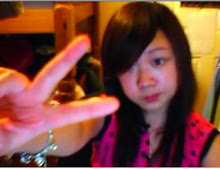My class and I created a map around Bermondsey and had a class discussion on how to present the map to the college. We had to decide where the map should be presented, why is that a good place for it to be presented, and what’s the purpose of making a map?.
Our theme is based on “Capture” capture means “Sharing”. I and the group decided to create a map to share our experiences to the audience. We had to split each road/area for each person to draw and then walked around Bermondsey to take pictures – do sketches and do other type of capturing.
The purpose for making a map was to draw people in and to make the audience feel that they were there. Capture also means Personalizing, the audience likes to be drawn in to things that is personal to the artist and relates to people. We as a creative media students created a map to make it look eye – catching and inspiring. We want the audience to know how creative we are by using different methods of capturing. Rough Sketches is a good way to capture a moment or a thing because it’s something personal.
Audience prefers to have something to be inspired about instead of just examining a photograph. Another purpose for making a map is that we want to be specific, we want the area to be more familiar to us, so we walked around Bermondsey and captured things like road signs, drawing in a particular area and to be accurate.
We and as creative media students, drew our own sections of the map because we want to show our impressions to the audience. We wrote down our own thoughts about the journey and how everythings changed from the past.
http://www.literaturecollection.com/a/dickens/oliver-twist/50/ this is a reference from Charles Dickens Oliver Twist a scene set in Jacobs Island, in this chapter, dickens specifically described the Jacobs Island in 19 century time. He starts of by using descriptive words to describe the area ,then with his own impression and thoughts he uses words like broken, dirt, domestic,Rotton. By comparing this to the 21st century, my impression of the journey is now pleasant because new houses and estates have been built and whats interesting about the houses is that some of windows are structured the same because these houses want to have a history to them.
I and the group also have to discuss how to present it to the college; we made suggestions like placing it in front of the entrance of the college, to indicate to people what we are doing and wanting everyone to look at our work. I disagreed because not a lot of people would pay attention to our work because a lot of students would be rushed to go to their lessons or go out of college. However, I also have an advantage about the suggestion, even though some people will be rushing to go to their lessons. Some people would mainly go to the entrance to hang around before leaving the college.
We also suggested that the map will be located in the canteen; I agreed and disagreed on that suggestion because some people might not even want to eat in the canteen but go out and eat. Also, not a lot of people would pay attention to our work. If our work was to be stuck on the wall on the canteen, it would be kind of confusing to audience on how it’s presented. Some people might even think that the piece of work is a childish drawing done by a kid.
One of us suggested that it should be placed on top of the roof of the canteen, I disagreed because no one would look up at the roof just to look at our work especially the written task we had to do reflecting on Bermondsey no-one would be able to read our review. Another suggested that the work should placed on the library communal, I personally think that would be a good idea but a lot of people might be paying attention to do their own work instead of noticing our work. If I was to present the map in a particular location, it would be by the canteen on the floor, if we want to personalize and share to the audience we have to be specific and make it look realistic. I personally won’t stick the map on the ground like that because it would be tread on and our work would be damaged. I would laminate the map before sticking it on the floor.
Although our map don’t seem that much accurate, in future I would have our map to be presented in this way; make the roads to be more accurate, make sure the pictures we took in Bermondsey was the actual place that’s located in the map, Add colour to the pictures we took, try to make the font writing funky so it makes it looks more eye-catching. And laminate the floor for people to walk in to, to make them feel that they were there.
 Last week, I and the creative media group took another visit around Bermondsey.Before we set off, we had to create different backgrounds using different medias.
Last week, I and the creative media group took another visit around Bermondsey.Before we set off, we had to create different backgrounds using different medias.












